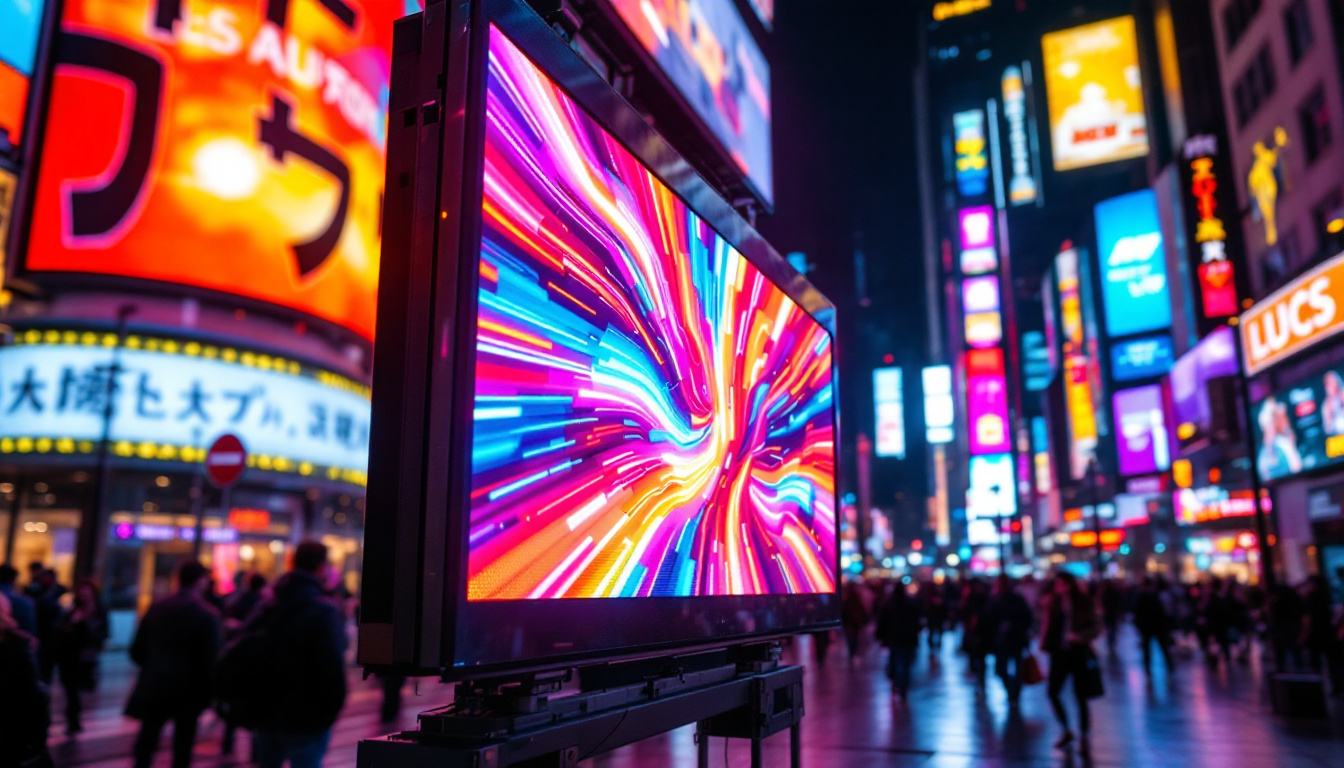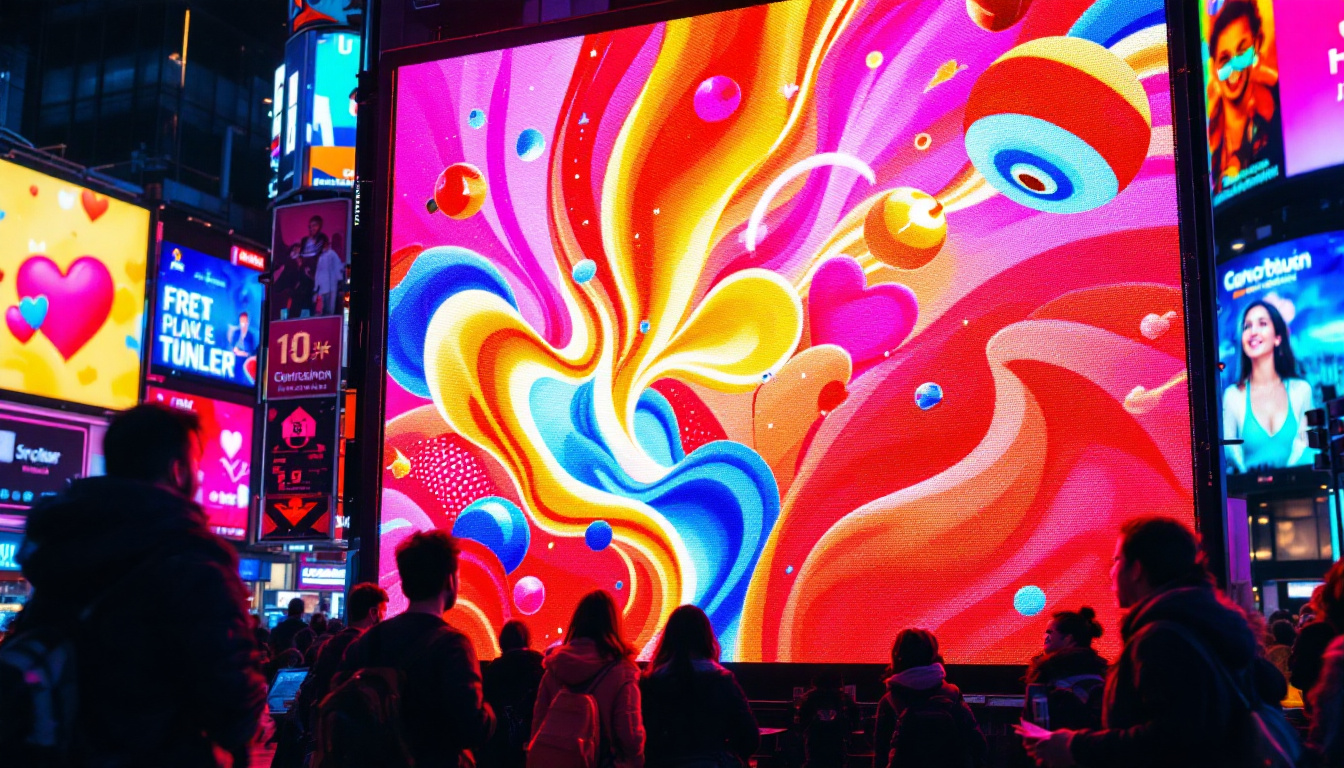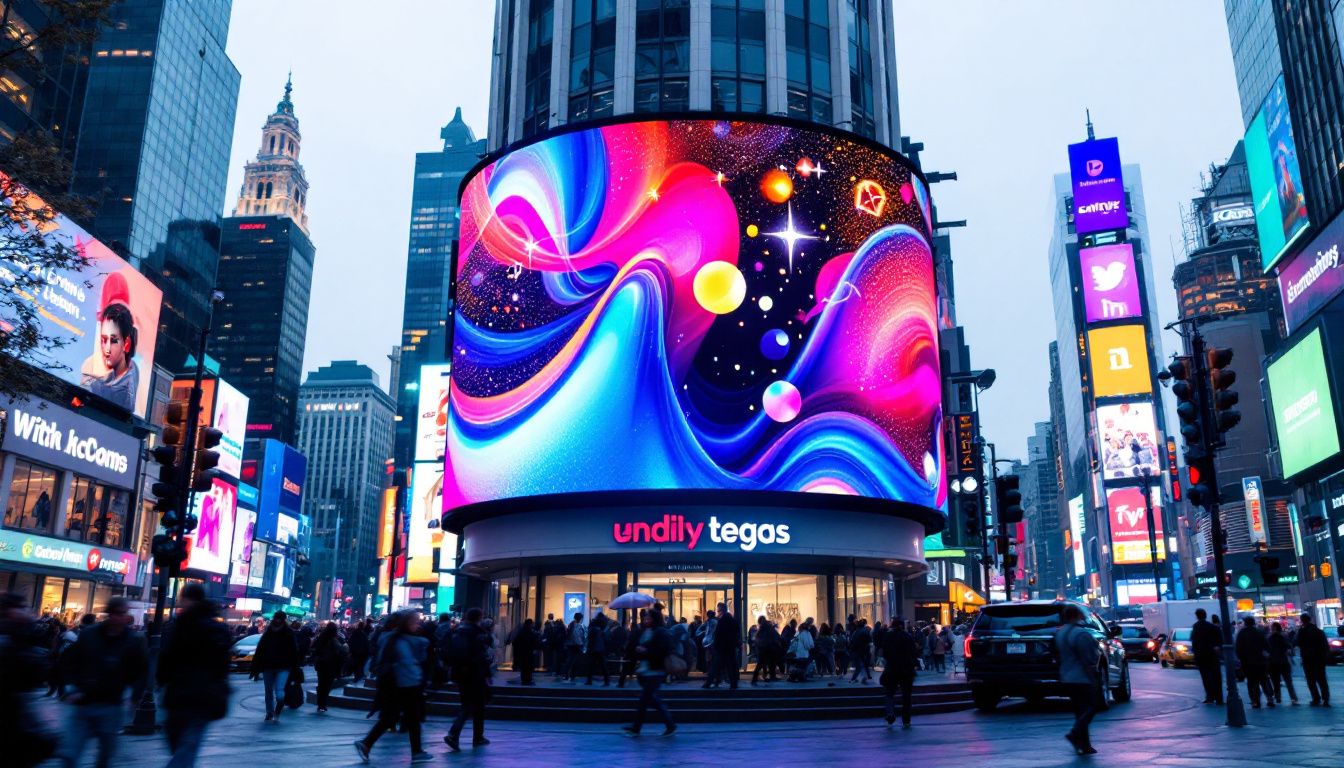Signage LCD Display: LED Display Explained
In today’s fast-paced digital world, effective communication is paramount for businesses and organizations. One of the most impactful ways to convey messages is through signage, particularly with the use of LCD and LED displays. These technologies have revolutionized how information is presented, offering vibrant visuals and dynamic content. This article delves into the intricacies of signage LCD displays and LED displays, exploring their features, benefits, and applications.
Understanding LCD Displays
Liquid Crystal Display (LCD) technology has been a staple in the display industry for several decades. LCDs work by manipulating light through liquid crystals, which are sandwiched between two layers of glass. This technology is commonly used in televisions, computer monitors, and digital signage.
How LCD Displays Work
At the core of an LCD display is a backlight, typically composed of LED lights, which illuminates the liquid crystals. When an electrical current is applied, these crystals align in a way that either blocks or allows light to pass through, creating images. The combination of red, green, and blue sub-pixels enables the display to produce a wide range of colors.
LCD displays are known for their sharp image quality and energy efficiency. They are often lighter and thinner than traditional cathode-ray tube (CRT) displays, making them ideal for various applications, including digital signage. The technology has evolved significantly, with advancements such as in-plane switching (IPS) and twisted nematic (TN) panels, which enhance viewing angles and color reproduction, catering to diverse user needs.
Advantages of LCD Displays
One of the primary advantages of LCD displays is their ability to produce high-quality images with excellent color accuracy. This makes them suitable for environments where visual clarity is essential, such as retail stores, museums, and corporate offices. Furthermore, the flat-panel design of LCDs allows for seamless integration into modern interior designs, providing a sleek and professional appearance.
Moreover, LCD displays consume less power compared to older technologies, contributing to lower operational costs. Their longevity also means that businesses can invest in LCD technology without frequent replacements. In addition, the versatility of LCDs allows them to be used in various formats, from large-scale video walls to compact handheld devices, making them a popular choice across multiple industries, including healthcare, education, and entertainment.
Limitations of LCD Displays
Despite their many advantages, LCD displays do have limitations. One significant drawback is their performance in bright environments. While they can produce vibrant colors, direct sunlight can wash out the images, making them less effective for outdoor signage. To combat this issue, manufacturers have developed high-brightness LCDs and anti-glare coatings, but these solutions can increase costs and complexity.
Additionally, LCD displays typically have slower response times compared to LED displays, which can result in motion blur during fast-moving visuals. This can be a concern for applications that require real-time updates or dynamic content. As a result, gamers and professionals who rely on high-speed visuals often prefer alternatives like OLED displays, which offer faster refresh rates and deeper contrasts. Nonetheless, the continuous innovation in LCD technology aims to address these limitations, ensuring that they remain a competitive option in the ever-evolving display market.
Exploring LED Displays
Light Emitting Diode (LED) displays have gained immense popularity in recent years, particularly in outdoor and large-scale advertising. Unlike LCDs, which rely on a backlight, LED displays use individual diodes to emit light, allowing for greater flexibility and brightness.
How LED Displays Work
LED displays consist of an array of tiny light-emitting diodes that work together to create images. Each diode can be turned on or off independently, allowing for precise control over brightness and color. This capability enables LED displays to achieve higher levels of brightness and contrast than traditional LCDs.
Moreover, LED technology can be categorized into two main types: passive and active. Passive LED displays use a matrix of LEDs, while active displays have dedicated circuitry for each pixel, resulting in superior image quality and refresh rates. Active displays are particularly beneficial for applications requiring high-definition visuals, such as video walls in sports arenas or concert venues, where every detail matters.
Advantages of LED Displays
One of the most significant advantages of LED displays is their brightness. They can produce vivid images even in direct sunlight, making them ideal for outdoor signage. This capability is particularly beneficial for businesses looking to attract attention in crowded urban environments. The ability to adjust brightness levels dynamically based on ambient light conditions further enhances their effectiveness, ensuring that messages are always clear and eye-catching.
Additionally, LED displays are highly customizable in terms of size and shape. They can be designed to fit various spaces, from large billboards to small storefront displays. This versatility allows businesses to create unique advertising solutions tailored to their specific needs. Furthermore, advancements in flexible LED technology have made it possible to create curved or irregularly shaped displays, opening up new avenues for creative advertising that can seamlessly integrate into architectural designs.
Limitations of LED Displays
While LED displays offer numerous benefits, they also come with certain drawbacks. The initial investment for LED technology can be higher than that of LCDs, which may deter some businesses from making the switch. However, the long-term savings on energy and maintenance often justify the upfront costs. Additionally, the durability of LED displays can lead to extended lifespans, reducing the need for frequent replacements and further enhancing their cost-effectiveness over time.
Another limitation is the potential for color inconsistency across different LED modules. Ensuring uniformity in color and brightness can be a challenge, particularly for large installations. Proper calibration and quality control are essential to mitigate this issue. Moreover, environmental factors such as temperature fluctuations can affect performance, necessitating careful consideration during installation and maintenance. Despite these challenges, ongoing innovations in LED technology continue to address these limitations, making them an increasingly viable option for a wide range of applications.
Comparing LCD and LED Displays
When choosing between LCD and LED displays for signage, several factors should be considered. Understanding the differences between these technologies can help businesses make informed decisions based on their specific needs.
Brightness and Visibility
Brightness is a critical factor for signage, especially for outdoor applications. LED displays excel in this area, providing high levels of brightness that can cut through sunlight and ensure visibility at all times. In contrast, LCD displays may struggle in bright environments, limiting their effectiveness for outdoor use.
Image Quality and Color Accuracy
Both LCD and LED displays offer excellent image quality, but they differ in color reproduction. LCDs are known for their accurate color representation, making them suitable for applications where precise visuals are essential. On the other hand, LED displays can achieve higher contrast ratios and deeper blacks, enhancing the overall viewing experience.
Cost Considerations
Cost is often a deciding factor when selecting a display technology. Generally, LCD displays are more affordable upfront, making them appealing for businesses with limited budgets. However, LED displays tend to have lower operational costs due to their energy efficiency and longer lifespan, which can lead to savings over time.
Applications of LCD and LED Displays
Both LCD and LED displays have a wide range of applications across various industries. Understanding where each technology excels can help businesses leverage their benefits effectively.
Retail and Advertising
In the retail sector, both LCD and LED displays are used for advertising and promoting products. LCD displays are often found in store windows, providing dynamic content to attract customers. Meanwhile, LED displays are commonly used for large-scale outdoor advertising, such as billboards and digital signage in urban areas.
Transportation and Wayfinding
LCD and LED displays play a crucial role in transportation systems, providing real-time information to passengers. LCD screens are frequently used in train stations and airports for displaying schedules and announcements. In contrast, LED displays are ideal for bus stops and roadside signage, offering clear visibility even in adverse weather conditions.
Corporate and Educational Settings
In corporate environments, LCD displays are often utilized for presentations and meetings, providing clear visuals for sharing information. LED displays, on the other hand, are increasingly being adopted in conference rooms and auditoriums for their superior brightness and image quality, enhancing the overall presentation experience.
Future Trends in Display Technology
The display technology landscape is constantly evolving, with new advancements on the horizon. As businesses seek innovative ways to engage audiences, several trends are emerging in the signage industry.
Integration of Smart Technology
One of the most significant trends is the integration of smart technology into displays. This includes features such as touch capabilities, interactivity, and connectivity to the internet. Smart displays allow businesses to create engaging experiences, enabling customers to interact with content in real-time.
Increased Focus on Sustainability
As environmental concerns continue to rise, there is a growing emphasis on sustainable display technologies. Manufacturers are exploring eco-friendly materials and energy-efficient designs to reduce the environmental impact of displays. This trend aligns with the broader movement towards sustainability in business practices.
Advancements in Display Resolution
With the demand for high-quality visuals increasing, advancements in display resolution are also on the rise. Technologies such as 4K and even 8K resolution are becoming more accessible, allowing businesses to deliver stunning visuals that captivate audiences. This trend is particularly relevant for industries such as entertainment and advertising, where image quality is paramount.
Conclusion
In summary, both LCD and LED displays offer unique advantages and applications that cater to various business needs. Understanding the differences between these technologies is essential for making informed decisions regarding signage solutions. As the display industry continues to evolve, businesses must stay abreast of emerging trends to leverage the full potential of these technologies.
Whether opting for the color accuracy of LCD displays or the brightness and versatility of LED displays, the right choice can significantly impact how effectively a message is communicated. Investing in the appropriate signage technology can enhance visibility, engage customers, and ultimately contribute to business success.
Discover LumenMatrix’s Innovative LED Display Solutions
Ready to elevate your visual communication strategy with cutting-edge technology? Look no further than LumenMatrix, a pioneer in LED display innovation. From vibrant Indoor and Outdoor LED Wall Displays to dynamic Vehicle and Sports LED Displays, LumenMatrix offers a wide array of solutions tailored to your unique needs. Experience the power of Custom LED Displays, All-in-One LED Displays, and even LED Transparent Displays designed to captivate and engage your audience. Embrace the future of digital signage with LumenMatrix and transform how your business connects with the world. Check out LumenMatrix LED Display Solutions today and make a lasting impression with every message.































